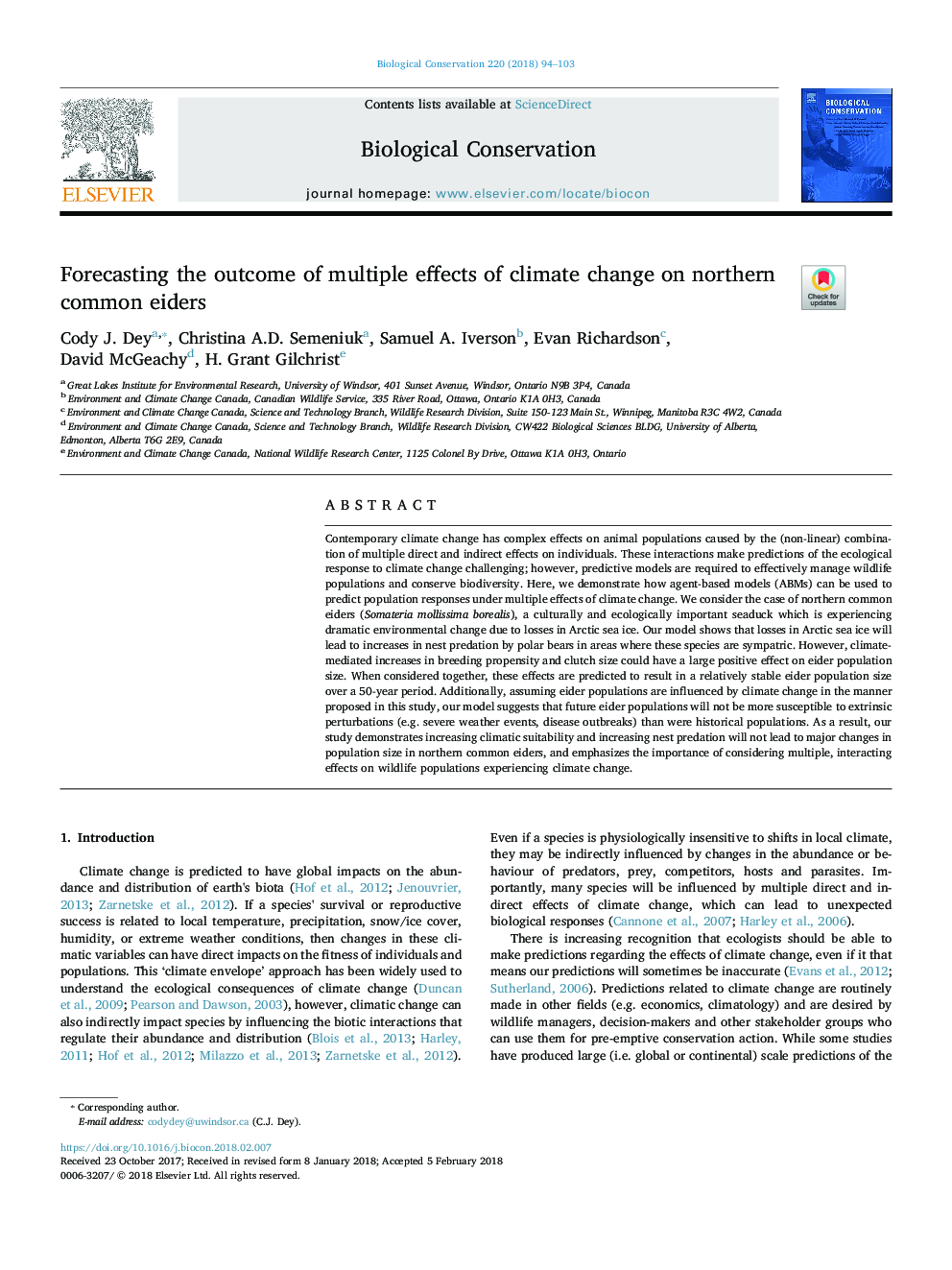| Article ID | Journal | Published Year | Pages | File Type |
|---|---|---|---|---|
| 8847375 | Biological Conservation | 2018 | 10 Pages |
Abstract
Contemporary climate change has complex effects on animal populations caused by the (non-linear) combination of multiple direct and indirect effects on individuals. These interactions make predictions of the ecological response to climate change challenging; however, predictive models are required to effectively manage wildlife populations and conserve biodiversity. Here, we demonstrate how agent-based models (ABMs) can be used to predict population responses under multiple effects of climate change. We consider the case of northern common eiders (Somateria mollissima borealis), a culturally and ecologically important seaduck which is experiencing dramatic environmental change due to losses in Arctic sea ice. Our model shows that losses in Arctic sea ice will lead to increases in nest predation by polar bears in areas where these species are sympatric. However, climate-mediated increases in breeding propensity and clutch size could have a large positive effect on eider population size. When considered together, these effects are predicted to result in a relatively stable eider population size over a 50-year period. Additionally, assuming eider populations are influenced by climate change in the manner proposed in this study, our model suggests that future eider populations will not be more susceptible to extrinsic perturbations (e.g. severe weather events, disease outbreaks) than were historical populations. As a result, our study demonstrates increasing climatic suitability and increasing nest predation will not lead to major changes in population size in northern common eiders, and emphasizes the importance of considering multiple, interacting effects on wildlife populations experiencing climate change.
Related Topics
Life Sciences
Agricultural and Biological Sciences
Ecology, Evolution, Behavior and Systematics
Authors
Cody J. Dey, Christina A.D. Semeniuk, Samuel A. Iverson, Evan Richardson, David McGeachy, H. Grant Gilchrist,
